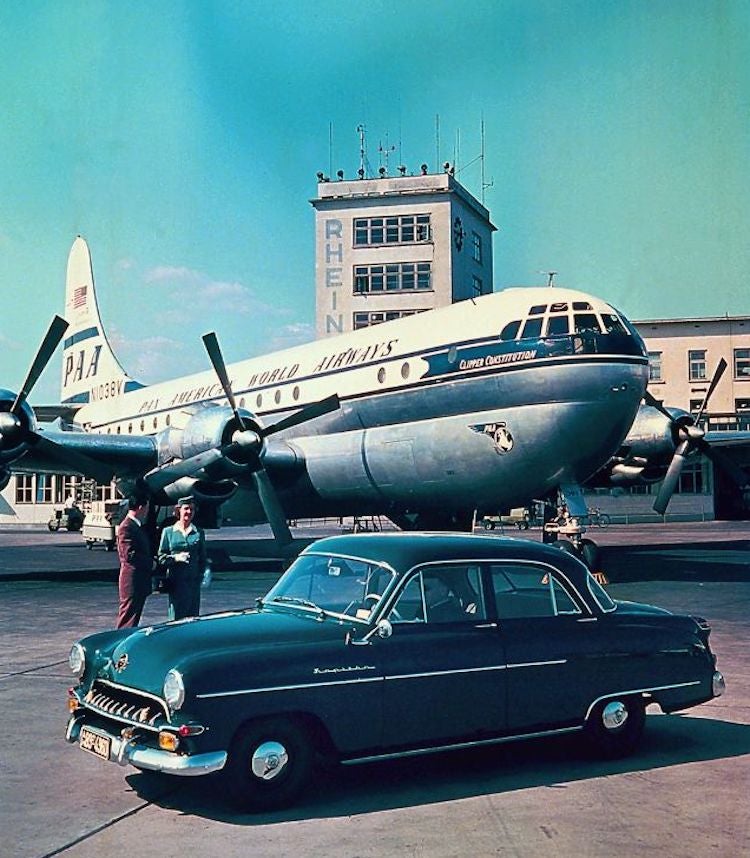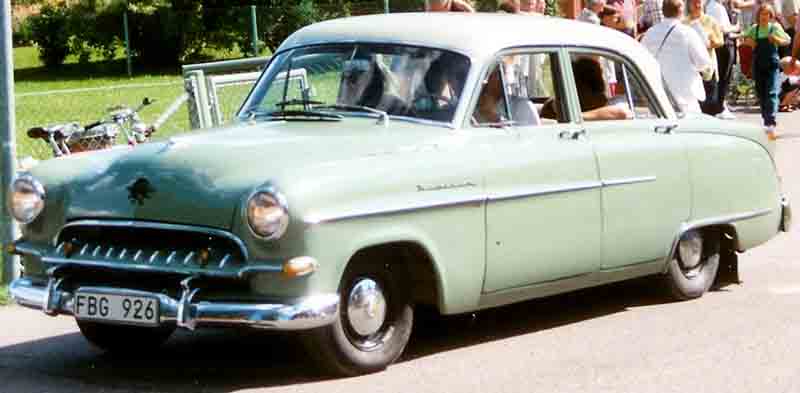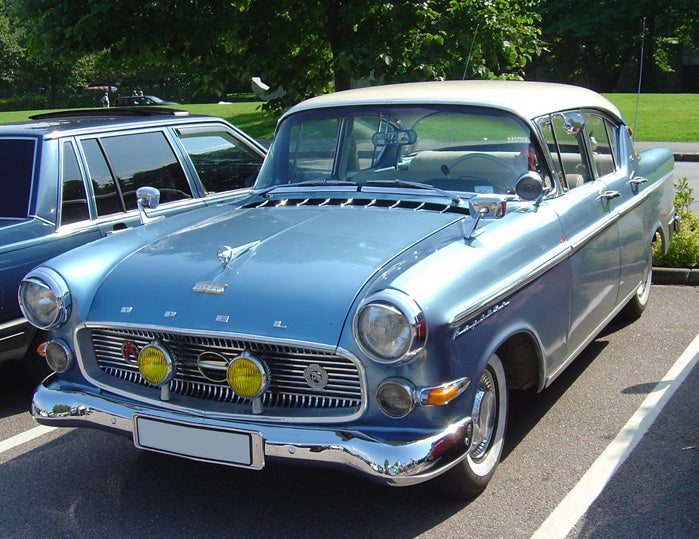 "ttyymmnn" (ttyymmnn)
"ttyymmnn" (ttyymmnn)
08/18/2020 at 09:05 • Filed to: wingspan, Planelopnik, Opel
 4
4
 11
11
 "ttyymmnn" (ttyymmnn)
"ttyymmnn" (ttyymmnn)
08/18/2020 at 09:05 • Filed to: wingspan, Planelopnik, Opel |  4 4
|  11 11 |

Good Morning, Oppo.
Today we have a Pan American World Airways Boeing 377 and an Opel Kapitän. The Boeing 377 was a commercial derivative of the C-97 freighter, which itself was derived from the B-29 Superfortress. Boeing squeezed a lot of airplanes out of that basic design. While the 377's double-bubble pressurized fuselage made for lots of room, nagging problems with the engines meant that only 55 were built.
As for the Opel, you’re on your own. All I can tell you is that it’s a 1953 or later.
!!! UNKNOWN CONTENT TYPE !!!
 jminer
> ttyymmnn
jminer
> ttyymmnn
08/18/2020 at 09:29 |
|
Good Morning!
 RallyDarkstrike - Fan of 2-cyl FIATs, Eastern Bloc & Kei cars
> ttyymmnn
RallyDarkstrike - Fan of 2-cyl FIATs, Eastern Bloc & Kei cars
> ttyymmnn
08/18/2020 at 09:35 |
|
Morning! :)
Loving the Selective Yellow fog lights on that Opel! :)
 Who is the Leader - 404 / Blog No Longer Available
> ttyymmnn
Who is the Leader - 404 / Blog No Longer Available
> ttyymmnn
08/18/2020 at 09:40 |
|
Morning.
 Full of the sound of the Gran Fury, signifying nothing.
> ttyymmnn
Full of the sound of the Gran Fury, signifying nothing.
> ttyymmnn
08/18/2020 at 09:41 |
|
Good night!
 ttyymmnn
> RallyDarkstrike - Fan of 2-cyl FIATs, Eastern Bloc & Kei cars
ttyymmnn
> RallyDarkstrike - Fan of 2-cyl FIATs, Eastern Bloc & Kei cars
08/18/2020 at 09:44 |
|
That is a nice touch. I hadn’t noticed.
 user314
> ttyymmnn
user314
> ttyymmnn
08/18/2020 at 10:33 |
|
Rhein-Main / Frankfurt am Main airport.
B-377 reg no N1038V, the Clipper Constitution, was upgraded to Super Stratocruiser and renamed Clipper Hotspur in 1954 ( so that narrows down the timeframe) and eventually used as the “airframe of registration” for the 377SG Super Guppy .
 ttyymmnn
> user314
ttyymmnn
> user314
08/18/2020 at 10:36 |
|
The source for this photo states 1953-1955 for the car, but it is no way a reliable source. Still, 1953 was the first year for this Kapitan model, so it would make sense they took a promotional photo, and that would place it as 1953 also because of the aircraft renaming.
I love a good history mystery.
 user314
> ttyymmnn
user314
> ttyymmnn
08/18/2020 at 10:59 |
|
Yeah, ‘ 55 doesn’t make sense. The Kapitan was refreshed in ‘55, but not enough to tell them apart, aside from the fog lamps .

There was a major facelift in ‘58 to the P1 model, but that’s a whole other story:

 Turbineguy: Nom de Zoom
> ttyymmnn
Turbineguy: Nom de Zoom
> ttyymmnn
08/19/2020 at 22:58 |
|
I questioned the nagging engine problem s you mentioned, but considering they were Pratt 4360s I can see how reliability might have been an issue. On the B-36, inflight engine shutdowns were pretty common.
 ttyymmnn
> Turbineguy: Nom de Zoom
ttyymmnn
> Turbineguy: Nom de Zoom
08/19/2020 at 23:36 |
|
This one-paragraph morning posts really don’t have much space for details. Getting the entire history of an aircraft into four or five sentences requires a certain amount of generalization and condensing. Wiki goes into more detail:
Problems included catastrophic failures of propellers, failures of propeller pitch control leading to overspeed incidents, problems related to the poor thermal design of the engine, and aerodynamic problems arising from design constraints imposed by the engine’s thermal problems. Its service record was marred by a high incidence of in-flight emergencies and hull-loss accidents related to those issues. The propellers were the subject of Airworthiness Directives in 1955, 1957, and 1958.
 Turbineguy: Nom de Zoom
> ttyymmnn
Turbineguy: Nom de Zoom
> ttyymmnn
08/20/2020 at 09:00 |
|
Wright’s R3350 Turbo Compound made the same power and even considering its sometimes problematic PRTs, had a much better service record. Makes you wonder who made the decision on the engines.